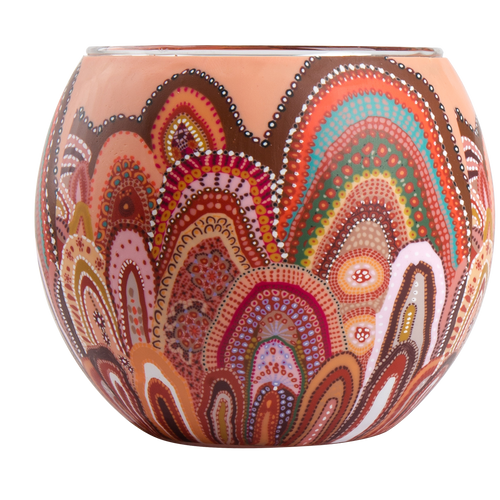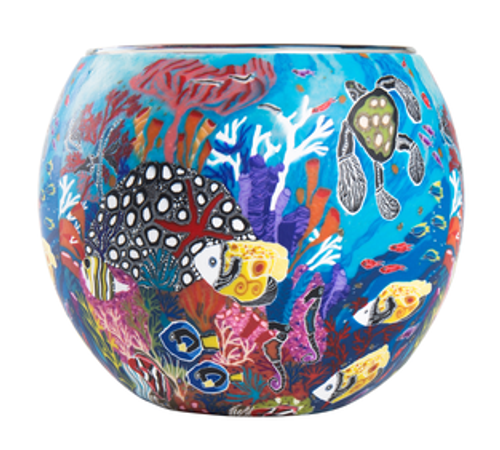This Bush Medicine candle holder is hand-made from glass and a layer of clay then beautifully gift boxed with a story card inside. The clay allows the candle flame to illuminate through and radiate the magnificent colours of the designs, captivating any space when using one of Koh's tealights.
Perfect for your home or as a gift for someone special!
- Size - 11cm diameter and 9cm height
- Suitable with one of Koh's tealights
- To clean, wipe with a damp cloth
- A portion of each sale goes to the artist.
- Designed in Australia.
- Australian owned and operated company.
Our candle holders are handmade with clay, therefore the end product may look slightly different to the images due to variations.
Women’s Dreaming – Khatija Possum
The Women’s Dreaming paintings by Khatija Possum depicts Women’s ceremonial sites surrounding Tjukurla in the western desert of Central Australia – traditional homelands to the artist’s great grandmother. Ceremonial sites carry a deep spiritual meaning, and it is where the women narrate their sacred Aboriginal dreamtime stories, through song lines, dance cycles and body paint.
This painting has many secret and sacred landmarks and iconography but also includes the important fire, bush tucker and waterholes that are imperative to the women as the ceremonies can last for over a week.
Though primarily a landscape painting Khatija has surpassed the basic stories and landmarks and has expanded this art of body painting and ceremonial themes into a classic contemporary composition, using modern acrylic paints.
For Khatija Possum, painting is in her blood. A descendant of the famous Clifford Possum Tjapaltjarri, Khatija has paved her own way and made a name for herself in the art world. Born in 1989 in Alice Springs in the Northern Territory, she has been deeply influenced by her grandfather, Clifford Possum, and her mother, Michelle Possum Nungurrayi artwork. When Khatija was nine, her mother began to paint again and it was at this time that Khatija fell in love with her mother’s work and indeed painting. Through observing and assisting her mother Khatija learnt to paint. It is this process that highlights the importance of art in keeping culture alive as stories and skills are passed from one generation to the next.
As a mother herself, the importance of keeping her cultural heritage strong is of great consequence. Khatija currently lives with her partner John and three children in Adelaide.







